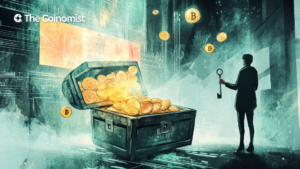How to Buy NFTs and Not Get Scammed

In the financial sector, there are enough scammers who have created a hundred different ways to cheat people and the NFT marketplace is not an exception. In order to protect yourself from losing funds you need to know about possible traps .
On this page
Rug pull
Rug pull is a type of fraud where the creators actively promote their project and then take off the project’s funds, stop responding in social media and messengers, or even delete their accounts. Afterwards, the price of the NFT collapses and the buyer suffers a loss.
How to avoid Rug pull?
Before a purchase, you need to check what kind of people are behind the project. We described the methods of studying the background in the article “How to distinguish a promising NFT project from a scam”
If the project team does not share any information about themselves and it is not possible to find any details about them on the Internet, this is a good reason not to be involved in that project.
Resale Scam
This scam happens when investors want to resell their purchased NFTs in a secondary market.
Most often an investor can choose preferred crypto for the exchange on the platform. The scheme is the following: before the deal, one of the parties changes the preferred crypto in the payment settings to another without notifying the second party of the deal. ERC-20 tokens are suitable for this.
More often USDT is used, but other options are possible (DAI, ATRI, RARI)
How not to lose money when reselling NFTs
1. Before confirming the transaction, check the preferred crypto and its rate several times.
2. Carefully read all risk warnings on the platform.
3. Do not complete the transaction until the system confirms the transfer from the buyer.
If you are a beginner, it is better to choose platforms where the exchange takes place with one cryptocurrency (for example, Foundation, SuperRare, Mintable).
Counterfeit NFTs
Sometimes scammers steal someone's artwork and list it on an NFT marketplace as personal (purchased or copyright). In such a way a victim buys an NFT that has no value as the seller lacks rights to it.
This can happen with new artworks and those that have already been listed as NFTs. It is even more difficult to prove a scam if the token is bought and copied on one blockchain and then sold on the other. In this case, the token loses its identifier and peg.
And another important question is whether generative art (a form of digital art that's created with the use of an autonomous system) a full-fledged creativity that can be copyrighted?
NFTs are still a new phenomenon and it will take some time to figure out how to legally protect investors.
But some marketplaces can completely prevent someone from copying images in good quality.
How to minimize the risk of buying counterfeit NFTs
1. Buy NFTs only from platforms with a well-established reputation.
2. Before a purchase, do your own research (DYOR), make sure that the seller has passed the verification procedure.
Remember that KYC does not guarantee that you will get your money back. You can make a complaint about the seller and notify the support team about fraud. But the refund process may take months due to the lack of a clear legal framework.
Pump and dump
There are situations when a group of scammers buys NFTs from themselves. So they still own their artwork without spending money. Such circulation of transactions inside “friendly” wallets drives up demand artificially.
How not to overpay for the NFT you liked
Pay attention to the transaction history of a particular token. Platforms with a good reputation give buyers the opportunity to review it. Check if NFT has changed owners several times within a short period of time, or if there is the same username of a buyer in history. If you notice it, you will most probably face fraudulent price manipulation.
Phishing and NFT airdrop scams
Phishing is the most arrogant and obvious kind of fraud, but it is still popular. Fake representatives of well-known companies try to get personal data through e-mails or private messages. In the case of NFT, most often they ask for a seed/recovery phrase from the wallet.
They also scam people with the help of airdrops. The user gets a link to a phishing website and if a person follows it and then links a wallet in order to get free NFT, so in such a way all data together with tokens, will be immediately stolen.
There is only one way not to fall for such a scam.
Never click on any links in emails or text messages if you are not completely sure who the sender is.
You have to check all airdrop posts on social media! Also make sure that each letter in the URL-address matches the address of the official project website.
Malicious Smart Contracts
Smart contracts are a very important part for the functioning of Ethereum blockchain. But due to the fact that a user can’t understand most of the functions without appropriate knowledge, smart contracts can also become a tool for scammers. For example developers can put a ban on the resale of a token after the first purchase in a smart contract is done.
In this case it is almost impossible to protect yourself from scam. Only a few ordinary users can figure out how to read smart contracts in NFT with a bunch of technical information.
Therefore, we advise you to follow the above written recommendations. They will help you to avoid losing money. And always remember that there's no such thing as a free lunch.
The content on The Coinomist is for informational purposes only and should not be interpreted as financial advice. While we strive to provide accurate and up-to-date information, we do not guarantee the accuracy, completeness, or reliability of any content. Neither we accept liability for any errors or omissions in the information provided or for any financial losses incurred as a result of relying on this information. Actions based on this content are at your own risk. Always do your own research and consult a professional. See our Terms, Privacy Policy, and Disclaimers for more details.
























